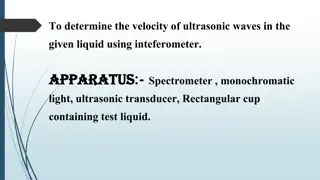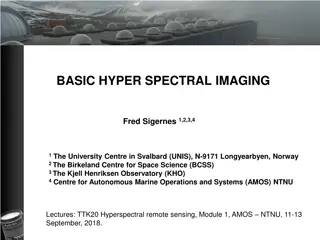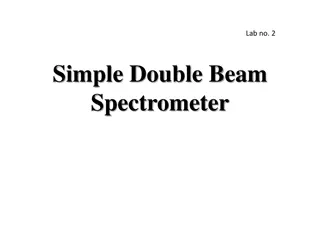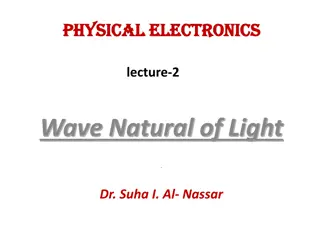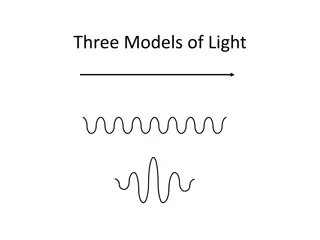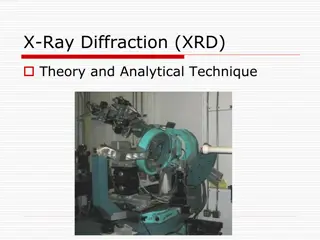Understanding Diffraction of Light: Types and Distinctions
The propagation of light according to the wave theory involves diffraction, where light waves exhibit bending around obstacles, causing a decrease in intensity. There are two main types of diffraction - Fresnel's and Fraunhofer's, each characterized by different conditions and behaviors. The distinction between interference and diffraction phenomena lies in the source and interaction of light waves. Understanding these concepts is essential in comprehending the behavior of light.
Download Presentation

Please find below an Image/Link to download the presentation.
The content on the website is provided AS IS for your information and personal use only. It may not be sold, licensed, or shared on other websites without obtaining consent from the author. Download presentation by click this link. If you encounter any issues during the download, it is possible that the publisher has removed the file from their server.
E N D
Presentation Transcript
Basanta Pathak Associate Professor in Physics Haflong Govt. College
Definition: According to the wave theory of light , the propagation of light is approximately rectilinear and light waves of extremely small wavelengths exhibit a slight bending in passing by the edge of an obstacle. This bending of light waves round the edge of an obstacle causing a rapid diminution in the intensity of light within its geometrical shadow is called the diffraction of light.
Distinction between the Interference and Diffraction phenomena : 1. Interference fringes are the result of interaction of light waves arriving from different wavelengths but derived from the same source. Diffraction fringes are the result of interaction of light waves arriving from different points of the same wave front. 2. All the bright bands have uniform intensity. All the bright bands have not the same intensity. 3. Regions of minimum light intensity are perfectly dark. Regions of minimum light intensity are not perfectly dark. 4. Interference fringes may or may not have same width. Diffraction fringes have never same width.
Types of Diffraction : There are two types of diffraction phenomena. These are .. 1. Fresnel s diffraction and 2. Fraunhofer s diffraction phenomena. Fresnel s type of diffraction: (i) In this type, the source of light or the screen or both are at finite distances from the obstacle. No lenses are used to make the light rays parallel or convergent. (ii) The incident wave front is either spherical or cylindrical and are never plane. (iii) Fresnel s diffraction is produced when light waves suffer bending or diffraction at a straight edge, a narrow slit, a thin wire, a small circular obstacle or a hole. A zone plate is an example of this type of diffraction.
(iv) As the incident wave front is not plane the phase of the secondary wavelets have not same value at all the points of the aperture or the obstacle producing diffraction. Fraunhofer Types of diffraction: (i) In this type, the source of light and the screen are virtually at infinite distances from the aperture or the obstacle producing diffraction. This may be realized by placing a convex lens at a distance equal to its focal length from the source, so that a parallel beam may fall on the aperture. Then a second convex lens is used to focus the emergent parallel beam after diffraction on the screen. This inter-position of two lenses removes the source and the screen to infinite distances.
(ii) In this case, the incident wave front is plane and so the phase of vibration is same at every point of the aperture. (iii) With this type of diffraction we get plane diffraction grating and concave reflection grating. The end.
Thanks For Your Co-operation





